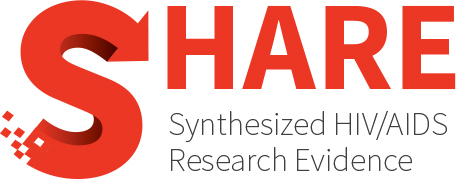Category Archives: Prevention, Engagement and Care Cascade
Regional variation in NAFLD prevalence and risk factors among people living with HIV in Europe: A meta-analysis
BACKGROUND AND AIM: Europe faces an elevated risk of nonalcoholic fatty liver disease (NAFLD) among people living with HIV (PLWH), contributing to the region’s highest global burden of NAFLD. However,...
Adherence to option B+ antiretroviral therapy and associated factors in pregnant and breastfeeding women in Sub-Saharan Africa: A systematic review and meta-analysis
Background To assess the adherence to option B + antiretroviral therapy (ART) and associated factors in pregnant and breastfeeding women in Sub-Saharan Africa (SSA). Methods We conducted a comprehensive search from 01st January...
Cardio-metabolic health of offspring exposed in utero to human immuno-deficiency virus and anti-retroviral treatment: A systematic review
BACKGROUND: Antiretroviral treatment (ART) use during pregnancy continues to rise as it is known to decrease the likelihood of HIV transmission from mother to child. However, it is still unknown...
Incidence and predictors of loss to follow-up among Ethiopian children on antiretroviral therapy: A systematic review and meta-analysis
Introduction Loss of follow-up (LTFU) from ART regular follow-up is one of the key acknowledged causes for the development of ART-resistant virus strains currently. It becomes a major weakness for...
HIV prevention and treatment interventions for Black men who have sex with men in Canada: Scoping systematic review
BACKGROUND: Black men who have sex with men (MSM) experience disproportionately high HIV incidence globally. A comprehensive, intersectional approach (race, gender, and sexuality or sexual behavior) in understanding the experiences...
Prevention of viral hepatitis and HIV infection among people who inject drugs: A systematic review and meta-analysis
This study aimed to explore the current evidence on preventing blood-borne virus infections among people who inject drugs (PWID). We conducted a comprehensive search across three databases (PubMed, Embase, Cochrane...
Major drug resistance mutations on reverse transcriptase gene in human immunodeficiency virus type-1 in Indonesia: A systematic review
PURPOSE OF REVIEW: The prevalence of HIV-1 in Indonesia is on a concerning upward trajectory, with a concurrent rise in the development of drug-resistant strains, challenging the efficacy of antiretroviral...
Counseling supporting HIV self-testing and linkage to care among men who have se with men: Systematic review and meta-analysis
BACKGROUND: Counseling supporting HIV self-testing (HIVST) is helpful in facilitating linkage to care and promoting behavior changes among men who have sex with men (MSM). Different levels of counseling support...
The cost-effectiveness of Dolutegravir in combination with Tenofovir and Lamivudine for HIV therapy: A systematic review
The World Health Organization (WHO) recommends dolutegravir (DTG), a human immunodeficiency virus (HIV) medicine, as the first- and second-line treatment for all populations because, when compared to an efavirenz (EFV)...
A systematic review of the impact of HIV-related stigma and serostatus disclosure on retention in care and antiretroviral therapy adherence among women with HIV in the United States/Canada
This systematic review explores the roles of HIV stigma and disclosure of HIV serostatus in antiretroviral therapy (ART) adherence and retention in care (RIC) among women with HIV (WHIV) in...
